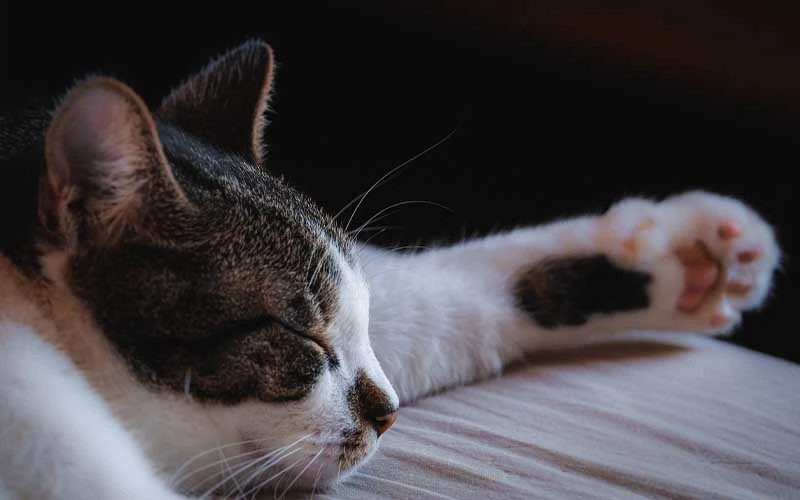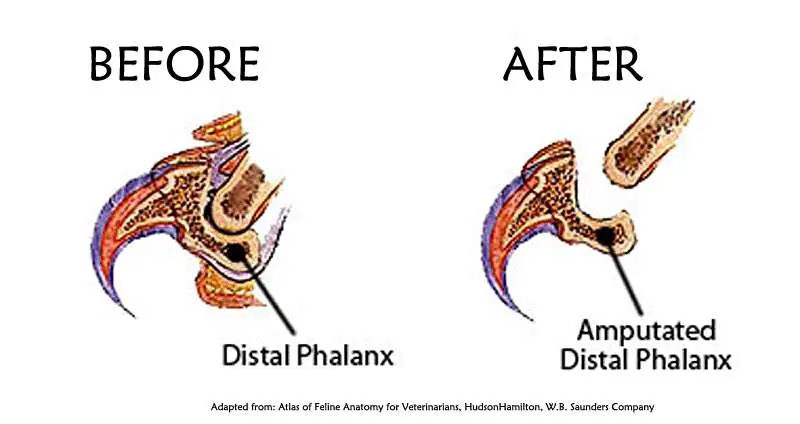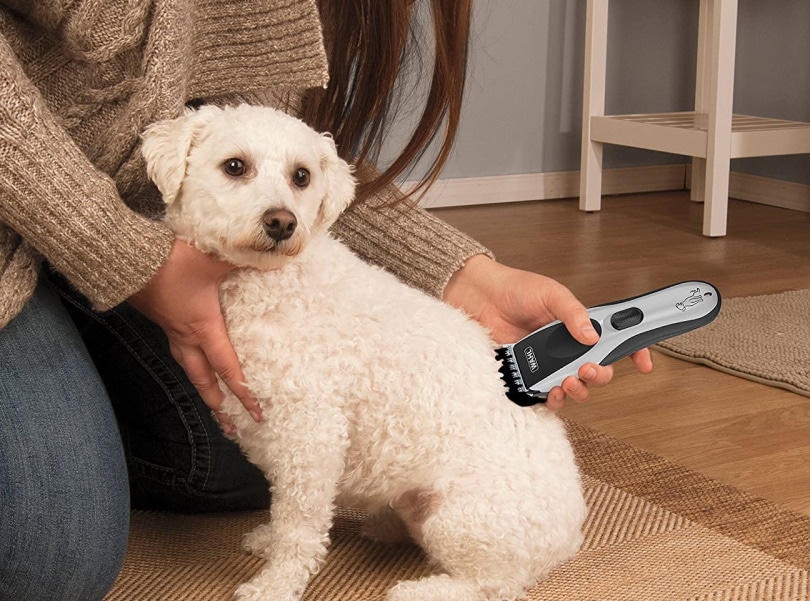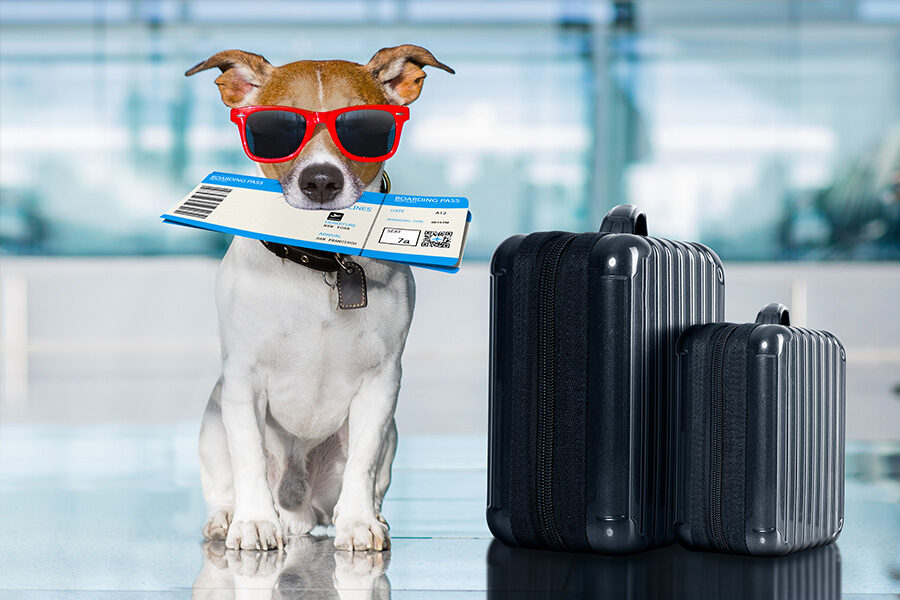Declawing is a surgery in which the ends of a cat’s toes are cut off, including the bone. It is painful for cats. Assume it like you cut off your own fingertips.
Before discussing cat declawing cost, let’s cover the reasons for declawing and its procedure.
Table of Contents
ToggleReasons for Declawing or Benefits to Declawing Cats
There are various reasons for declawing cat paws. This may be to protect things from sharp claws, or the cat is ill. So, in other words these are benefits to declawing cats.
1. To Protect Things
Cats scratch things. It’s a natural instinct for them. They scratch to sharpen their claws. They also scratch to leave their scent and claim their space. Sadly, this can ruin furniture. Some people declaw their cats to stop them from scratching.
2. Human Safety
Cats can sometimes hurt people with their sharp paws, even when just playing. This can be a problem for children, older people, or those with weaker health, as they might get hurt or infections more easily. To prevent this, some people choose to declaw their cats to remove the claws.
3. Infection in Cat Claws
Sometimes, a vet may suggest removing a cat’s nails. This only happens if the cat is very sick. Maybe the cat has a bad infection in its paw that won’t get better. Maybe it has a lump that hurts. Or maybe the paw hurts a lot, and nothing else helps. Removing the claws is a last resort to help the cat feel better.
The Cat Declawing Procedure
Some people think declawing is like cutting a cat’s nails.However, it is not true. Declawing is surgery where the vet removes the ends of the cat’s toes. This is where the claws grow.
There are three primary methods used for declawing cats:
1. Scalpel Disarticulation
It is a way to declaw a cat. In this method, the vet uses a special sharp tool called a scalpel. He uses the tool to cut the joint where the last little toe bone connects to the rest of the paw. This takes off the entire end of the toe, including the claw.
2. Resco Clipper (Guillotine)
Resco Clippers are like special, strong nail clippers. During a declaw surgery, the vet uses them to cut through the joint of the cat’s toe. This removes the last bone where the claw grows.
3. Laser Declawing
It is another way to remove a cat’s claws. In this method, the vet uses a special laser to cut the last bone in the toe. Some people think lasers make declawing less painful for the cat, but others aren’t so sure.
Cats need to be totally asleep for declawing, just like with other surgeries. The vet gives them special medicine so they won’t feel any pain during the procedure.
Cat Declawing Cost
It can cost a lot of money to declaw money, usually the average cost to declaw a cat is between $200 and $800. It’s important to ask your vet if this price is just for the cost to declaw the front paws of the cat or both front and back paws.
Factors Contributing to Average Cost to Declaw a Cat
Several factors can impact the final cost of declawing:
Cat’s Age: Kittens might be a little cheaper to declaw than older cats. They have smaller paws and usually heal faster.
Location: Where you live matters too! Vets in big cities charge more than vets in smaller towns.
Procedure Type: Laser declawing is often more costly compared to traditional scalpel or guillotine clipper methods.
Costs other than Surgery
There are some additional costs as well, other than surgery.
Before the surgery: The vet needs to check if your cat is healthy enough. This means an extra exam and maybe blood tests, which cost money.
After the surgery, Your cat will need medicine to help with pain. This costs extra.
Things can go wrong: Sometimes cats get infections or other problems after getting declawed. Fixing those problems can cost a lot more money.
Tip: It is better to ask about the surgery costs beforehand and any extra things your cat might need, like checkups, medicine, or fixing problems later.
Some people are against Declawing: Cons of Declawing.
Some people favor declawing and others are against declawing. Both have valid points. We have already covered the pros of declawing at the start. Below are the cons of declawing.
Pain and Recovery
Declawing your cat is a big surgery. It causes a lot of pain right after, and some cats might keep feeling that pain even after they heal.
Health Problems
Declawing can hurt cats a lot. They might get infections or lose too much blood. It can damage their nerves and even cause new bone to grow inside their paws, which hurts a lot. Sometimes, declawed cats get arthritis later in life, which makes their joints hurt.
Cats Can’t Protect Themselves
Cats use their claws to protect themselves. If they don’t have claws, they might be unable to protect themselves. And other things may attack cats easily.
Ethical Concerns
Lots of people who care about animals think declawing cats is wrong. Even big groups of veterinarians (animal doctors) say we shouldn’t do it just because a cat scratches things. They think it’s a mean thing to do unless the cat has a medical problem that needs fixing.
Alternatives to Declawing
There are lots of nicer ways to help a cat stop scratching things! These ways don’t hurt the cat and help them stay healthy and happy.
Training and Environmental Enrichment
Regular Nail Trims: Cutting your cat’s nails often keeps them from scratching stuff. You can do it at home if you learn how, or a pet groomer or animal doctor can help. It’s easiest to teach your cat to let you do this when they’re a kitten.
Multiple Scratching Surfaces: Give your cat lots of good things to scratch! Things like scratching posts and pads made of different stuff. Put these where your cat already likes to scratch so they’ll use them instead of your furniture.
Positive Reinforcement: When your cat scratches the right things, give them a treat, tell them they’re doing a good job, or play a game with them! This teaches them that scratching the right stuff makes good things happen.
Nail Caps: These soft plastic caps can be applied to your cat’s claws to minimize damage from scratching. They typically last 4-6 weeks before needing to be replaced.
Deterrents: You can make your furniture less fun for your cat to scratch. Put sticky tape, smelly spray that cats don’t like (like an orange smell), or even aluminum foil on it for a while.
Addressing Medical Causes: Consult Your Veterinarian: If your cat scratches a LOT, or seems hurt, take them to the animal doctor. Sometimes cats scratch too much because they’re itchy, sick, or in pain.
Tips
Cat Behaviorist: If your cat scratches a lot and you don’t know why, a special cat trainer such as Brooklyn Pet Spa can help! They understand why cats behave in a specific way. They can teach you how to stop your cat from useful things.
Pheromones: There are special calming scents, like Feliway, that can make cats feel less stressed. When cats are not worried, then they may scratch less things.
Cat Declawing Laws
Many countries think declawing is wrong unless a cat is sick and the doctor needs to do it. Places like Europe, Israel, Australia, and Brazil all say “no” to declawing. This is because people are learning that it can hurt cats and cause them problems later.
International Landscape
Many countries globally have entirely outlawed declawing for non-medical reasons. These countries include much of Europe, Israel, the United Kingdom, Australia, New Zealand, Brazil, and others. This reflects a growing understanding of the procedure’s potential negative consequences for cats.
US State Laws
States with Bans: New York was the first state to ban declawing cats. Later, Maryland did the same thing. Other states are as well to make laws about declawing.
City Ordinances: Several major US cities have also imposed bans on declawing, including Los Angeles, San Francisco, Denver, Austin, Pittsburgh, St. Louis, and several others. It’s important to note that even if a state has not banned Declawing, a specific city may ban declawing.
Veterinary Associations
American Veterinary Medical Association (AVMA): The biggest group of animal doctors in America doesn’t like declawing cats. They say it’s okay only if the cat is sick in its paws. They want people to try other things to stop cats from scratching stuff. Lots of other animal doctor groups agree with them.
Encourage Research: Reliable websites like those of the Humane Society of the United States (https://www.humanesociety.org/) or the Paw Project (https://pawproject.org/) provide valuable information about where declawing stands legally and ethically.
Conclusion
Removing a cat’s claws isn’t a simple nail trim. It’s a big surgery. It cuts off the last bone of each toe. Sometimes, vets need to do this for medical reasons. But it can really hurt cats.
Declawing causes pain and infections. It can make cats act strangely. Luckily, there are better ways to help! You can trim your cat’s nails often. Give them scratching posts. Use sprays or covers to protect furniture. Ask your vet about medical problems.
More people understand declawing is bad. Some places are banning it by law! This shows we care about cats. Always choose what’s best for your cat. Talk to your vet. Try other solutions. Be a good pet owner.
The more we teach people, the more they’ll choose better options. You can help! Spread the word. Keep cats healthy and happy. Together, we can improve cats’ lives!
FAQs:
Is it cruel to declaw a cat?
Yes, it is very cruel. Declawing is like cutting off the tips of your fingers. It hurts a lot and can cause problems for the cat for the rest of its life.
Why do people declaw cats?
To protect furniture and prevent scratches to humans. However, there are much less invasive ways to manage scratching behavior.
What countries ban declawing cats?
Many countries ban declawing, including:
- Europe: England, Germany, Austria, Switzerland, and many others
- Elsewhere: Brazil, Israel, Australia, New Zealand
- In the US: Some states and cities have bans.














